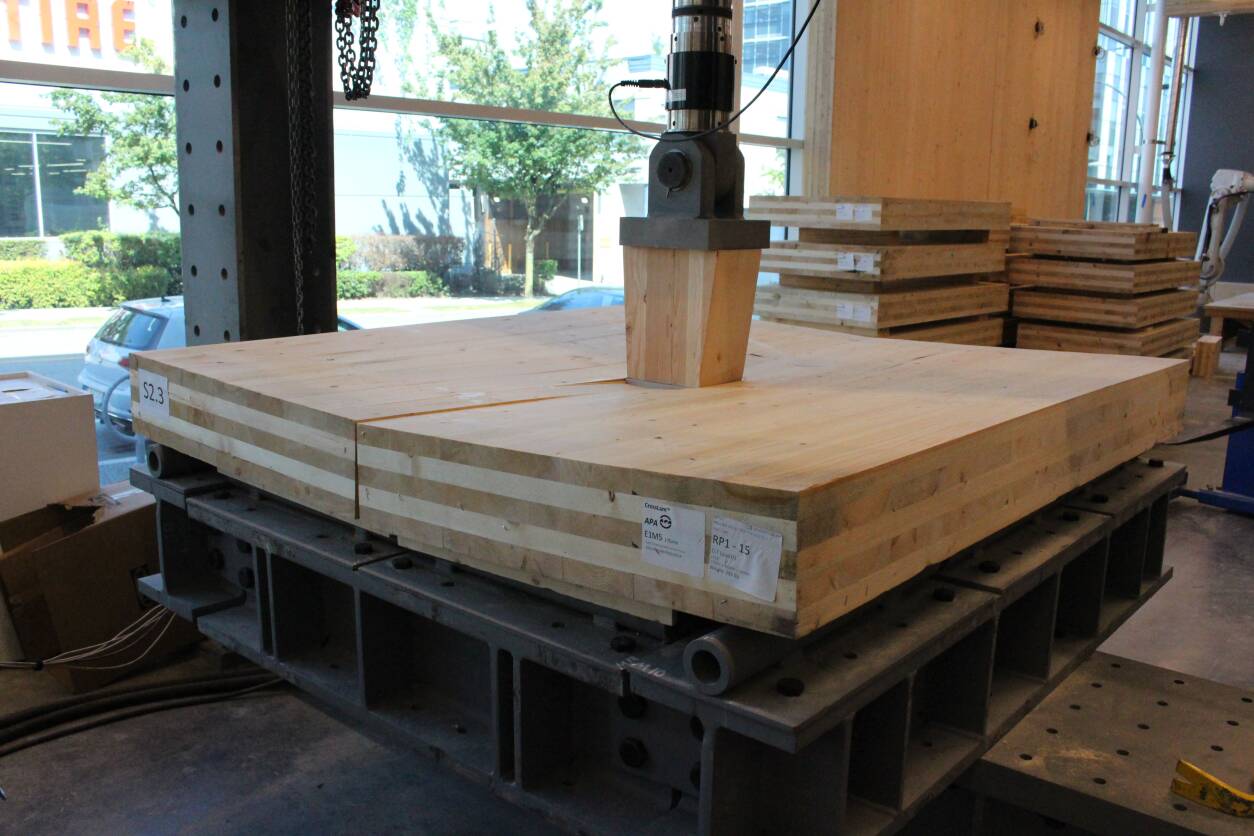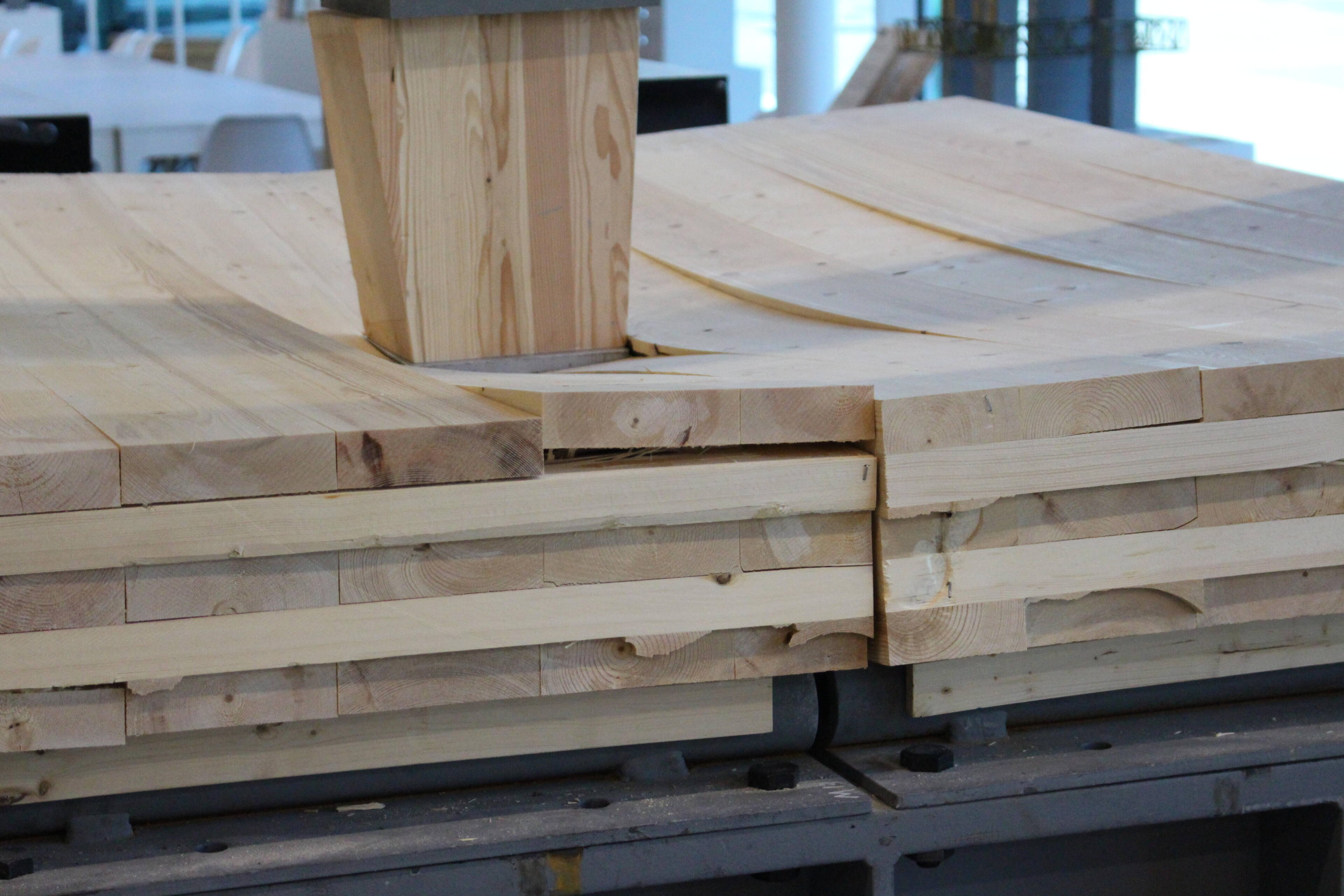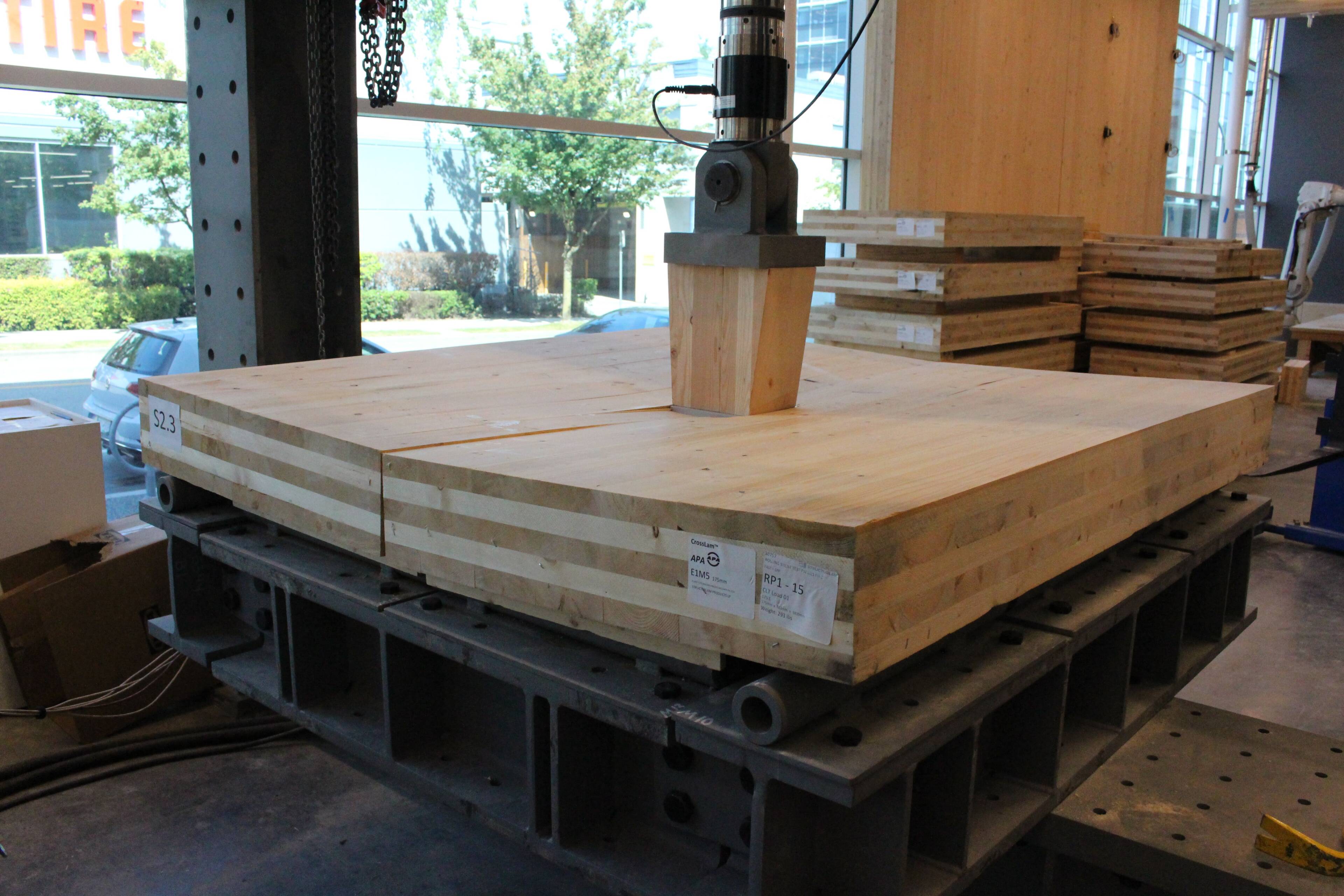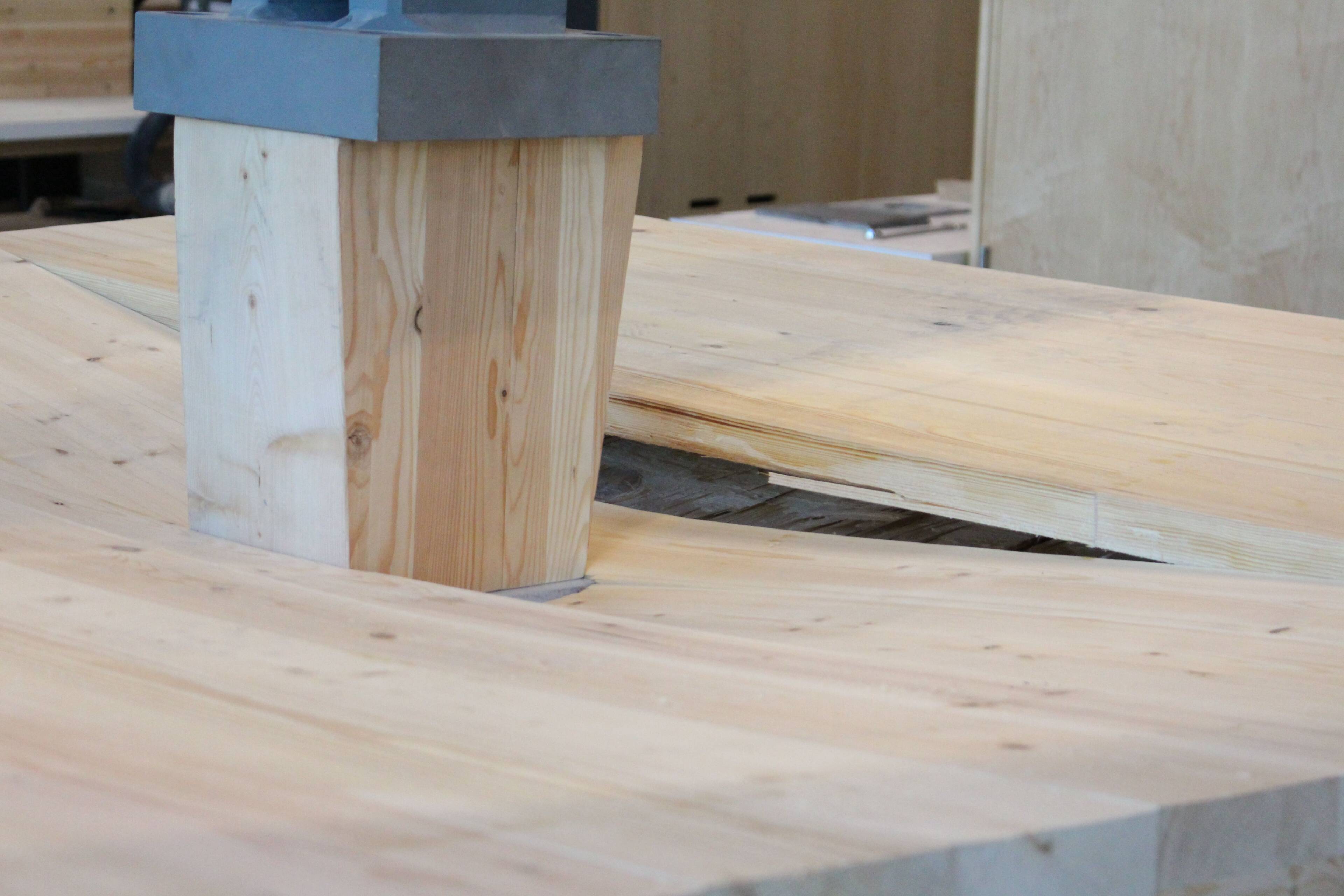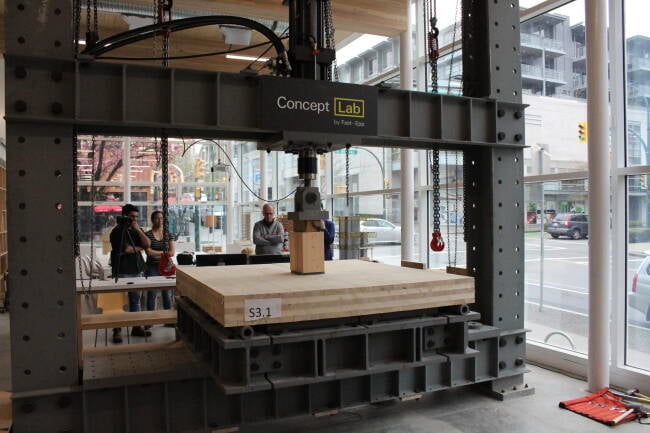
Carla Dickof, P.Eng., M.A.Sc.
Carla joined Fast + Epp in 2012 after completing her Master’s degree at the University of British Columbia, where her thesis focused on hybrid systems combining steel and mass timber (CLT). Originally from Saskatchewan, she previously worked as a project engineer on architecturally driven commercial, recreational, educational, and residential projects.
At Fast + Epp, Carla has developed expertise in all major building materials—including concrete, steel, light-frame wood, heavy timber, and mass timber—and is a trusted resource for clients seeking deep insight into building physics and materials performance. As the Testing Team Lead at the Concept Lab, Fast+Epp’s R&D hub, she uses the data gleaned from the Lab’s research programs to regularly contribute to academic journals and conferences.
In this interview, Derek Ratzlaff, Executive Director of WoodWorks BC speaks with Carla Dickof, Associate Principal, Director of Research and Development, Fast + Epp. She discusses her journey in mass timber design and research, current projects, and future initiatives in the field.
Derek Ratzlaff:
Thank you for this overview, Carla. Before we close, what is something else that you're excited about right now, a current project or other initiative?
Carla Dickof:
There are lots of things I'm excited about right now! The next thing that Fast + Epp has been looking into is opportunities in hybrid glulam. This means mixing species, both softwood and hardwood species, within a mass timber component. This would offer the industry the opportunity to economically incentivize biodiversity in our forests, to hopefully make our forests more resilient to our changing climate. It would also give more options to mass timber projects and to designers. That's another thing that excites me.
Additionally, a lot of the ongoing work with mass timber lateral systems is very exciting. I'm particularly interested in what’s happening with timber braces, for instance, timber BRBs (buckling restrained braces) are being developed in some areas of the market. There are also lots of different approaches to CLT shearwalls. I find that stuff very fun to watch and read about. There’s so much happening in wood design right now.
Derek Ratzlaff:
Thank you for your time and for so generously sharing your expertise with us, Carla. It’s been a pleasure speaking with you!
*This interview has been edited for length and clarity.
Derek Ratzlaff:
What types of projects do you see this research applying to? Where do you see this being the most attractive solution?
Carla Dickof:
I think the sector where this is most attractive is multi-unit residential. The grid spacing on those projects works relatively well with a point-supported system because point-supported is, at least now, somewhat limited by the width of CLT panels. CLT panels right now max out at about 12 feet, or 3 1/2 meters wide. The point-supported testing has used columns located at the edges of panels, so you need to match the panel width to the grid layout for this to work. I think in the future we could expand this system for other applications, but right now I see the most opportunity in multi-unit residential.
Derek Ratzlaff:
That’s interesting. I can see how this could also apply to hotels, student housing, and other small unit layouts. As you wrap up this scope, what are the next steps for the research, and what processes or approvals will follow?
Carla Dickof:
Our team at Fast + Epp has partnered with Thomas Tannert (BC Leadership Chair Tall and Hybrid Wood Construction) and a Ph. D student at the University of Northern British Columbia.
Right now we're finalizing a design procedure, so pushing forward into a paradigm where we can propose a simplified design method somewhat like the simplified design method that exists for two way concrete flat slabs where designers don't have to do complex modeling and they can use a relatively simple set of design equations to do this stuff.
That is in its final stages, with the goal of having journal articles on the topic published later this year. All the physical testing for the punching shear has been completed and was really quite successful. There is some ongoing testing over the next year or so that is going to give further clarity on reinforcing these panels with screws in special high load situations.
And then the team will present it to the code Committee this year to start the process of bringing it into Canadian design standards.
Derek Ratzlaff:
Let’s talk a bit about your current research projects. Can you tell me about the CLT punching shear test that's going on? Where do you see that research going and what are the goals?
Carla Dickof:
I would say the primary goal is to bring the point-supported structural system, specifically an understanding of punching shear, into the codes and standards that engineers operate with every day.
Right now, developers sometimes see it as a risk to pursue something like a point-supported system because it is outside the code and they don't know if they're going to have to do project specific testing or have a peer review, or what they're going to be required to do for these projects. Bringing this system into our codes and standards gives engineers a reliable approach to design, it gives owners confidence that the project will be smooth for them and they're not taking on unnecessary additional risk. I would say that's really our end goal.
Derek Ratzlaff:
How long have you been in the mass timber design and research world and what brought you there?
Carla Dickof:
I started my career in 2007, and I was lucky enough to come out of school and start my career with a company in Toronto called Blackwell. They did a decent amount of heavy timber work out east and I really enjoyed it. So, when I went to grad school, I looked for an opportunity to do research in mass timber and that landed me at the University of British Columbia in Vancouver where I did some research on hybrid mass timber and steel lateral systems.
After I finished my Master's degree, I landed at Fast + Epp which is where my career has been ever since, and I've been working with mass timber on at least some of my jobs since then.
Fast + Epp has worked on many mass timber projects, and early green construction grants let us push the envelope through project-specific testing with academic partners. Seeing the value of this approach, we expanded university partnerships and, in 2021, opened our own concept lab for in-house testing. It's been a mix of luck, interest, and opportunity that brought me here.
